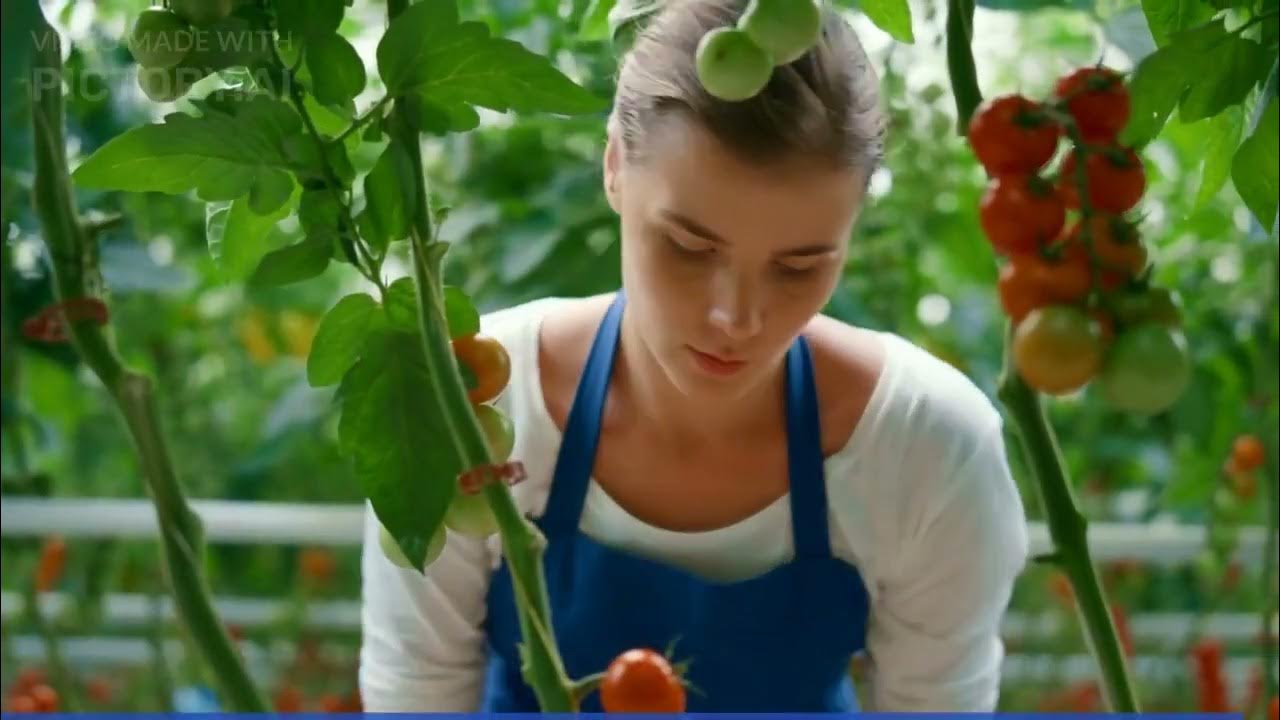Q&A.! Kenapa tanaman kita bisa terserang hama? - Pengamat hama & penyakit pertanian
Summary
TLDRIn this educational video, Rizali Anshar, a Field Agricultural Extension Officer, and Agusman, a pest observer, explore the critical topic of pest and disease management in agriculture. They discuss the importance of understanding pests, their causes, and the role of natural enemies in controlling pest populations. The duo covers various pest control methods, including physical, mechanical, biological, and chemical strategies. They emphasize the significance of proper pest monitoring and consulting with experts to prevent crop damage, offering valuable insights for farmers on how to manage pests effectively and sustainably.
Takeaways
- 😀 The video addresses the topic of pests and diseases in agriculture, based on a request from a viewer.
- 😀 Rizali Anshar, a field agricultural extension worker, and Agusman, a pest observer, discuss the topic in the video.
- 😀 The first step in understanding pests and diseases is to know their definitions and impacts on crops.
- 😀 According to Agusman, pests are visible organisms that harm plants, and their damage is noticeable without any special tools.
- 😀 Pests appear when the ecosystem around them is disturbed, often due to human activities like deforestation or the use of chemicals.
- 😀 Natural enemies of pests, such as predators and parasites, play a crucial role in controlling pest populations, but their numbers are declining.
- 😀 Farmers often neglect their environment, leading to pest outbreaks. Preventive physical measures should be taken before pest control begins.
- 😀 Physical methods like traps and mechanical control can reduce pest populations, and biological methods should be encouraged to support natural predators.
- 😀 Using pesticides should be carefully calculated based on economic thresholds to avoid unnecessary harm to the environment and natural pest controllers.
- 😀 Agusman emphasizes that when pests damage crops, farmers should not panic and should follow guidelines for controlled pesticide use, considering factors like time, dosage, and method.
Q & A
What is the primary focus of the video?
-The primary focus of the video is to provide insights into pest and disease management in agriculture, specifically addressing the causes of pest infestations and methods for controlling them.
Who are the main hosts in the video, and what are their roles?
-The main hosts are Rizali Anshar, an agricultural extension worker, and Agusman, a pest observer. Rizali guides the discussion, while Agusman shares his expertise on pest control and identification.
How does Agusman define pests?
-Agusman defines pests as organisms that disrupt plant growth. These pests are usually visible to the naked eye and can directly damage crops.
What causes pests to appear on crops according to the video?
-Pests emerge when the surrounding ecosystem is disturbed, such as through deforestation, chemical usage, or environmental imbalances. This disrupts the natural predator-prey relationship, allowing pests to proliferate.
What are the different types of pest control methods discussed in the video?
-The video discusses three main pest control methods: physical control (e.g., traps), biological control (using natural predators), and chemical control (using pesticides).
What is biological pest control, and why is it important?
-Biological pest control involves using natural predators, such as spiders or birds, to control pest populations. This method is important because it helps maintain ecological balance and reduces reliance on chemical pesticides.
What are some types of pests mentioned in the video, and how do they affect crops?
-The video mentions several types of pests: gnawing pests (e.g., rats), piercing pests (e.g., certain bugs), borer pests (e.g., caterpillars), and chewing pests (e.g., grasshoppers). Each pest type damages crops in different ways, such as by nibbling, piercing, or boring into plant tissues.
Why is it important to consider the economic impact when managing pests?
-Considering the economic impact is important because pest management decisions should be based on the severity of the infestation. For example, only when pest populations exceed a certain threshold (e.g., 10%) should control measures like pesticide application be considered.
What should farmers do if pests have already infested their crops?
-If pests have already infested crops, farmers should avoid panic and use a methodical approach to control the infestation. It's important to assess the severity and apply control measures appropriately, using a combination of physical, biological, and chemical methods if necessary.
What key advice does Agusman give to farmers for preventing pest infestations?
-Agusman advises farmers to select pest-resistant plant varieties, monitor soil health (e.g., pH levels), and ensure that the environmental conditions are suitable for healthy crop growth. He also recommends consulting agricultural experts for guidance and support.
Outlines

This section is available to paid users only. Please upgrade to access this part.
Upgrade NowMindmap

This section is available to paid users only. Please upgrade to access this part.
Upgrade NowKeywords

This section is available to paid users only. Please upgrade to access this part.
Upgrade NowHighlights

This section is available to paid users only. Please upgrade to access this part.
Upgrade NowTranscripts

This section is available to paid users only. Please upgrade to access this part.
Upgrade NowBrowse More Related Video

II Komponen Pemberantasan Hama, Perawatan, dan Efektivitas

Advanced Pest and Disease Management Techniques in Agriculture | Protect Your Crops!

PutraMOOC | PRT2008M Topic 6 Innovation and Challenges in Agriculture (Part 3/6)

What is Agricultural Extension

1. AGT - Ekologi Pertanian - Pengantar Ekologi Pertanian

SOAL SKB CPNS/PPPK PENYULUH PERTANIAN PART 1 #skb #penyuluhpertanian #cpns #pppk
5.0 / 5 (0 votes)